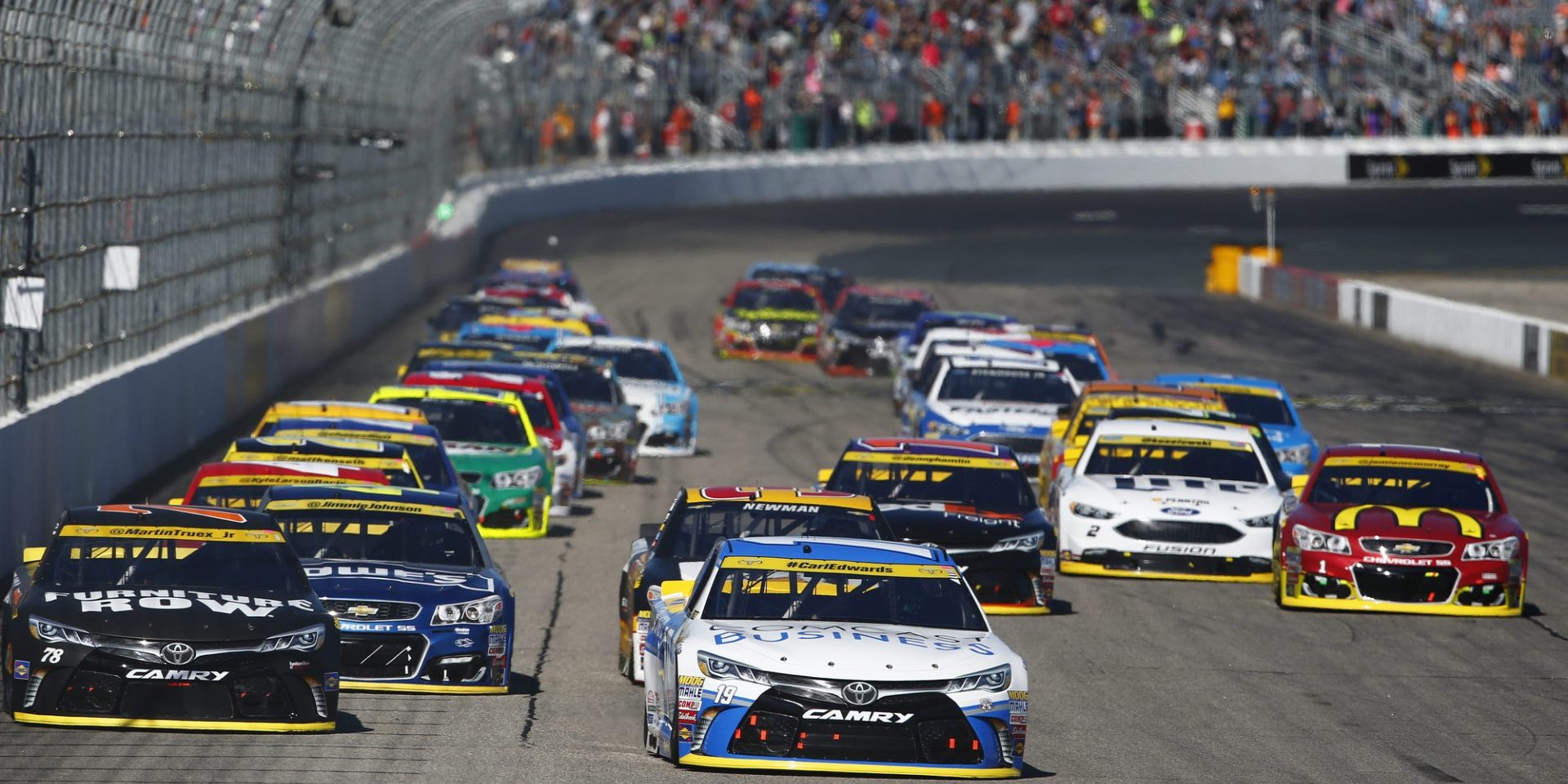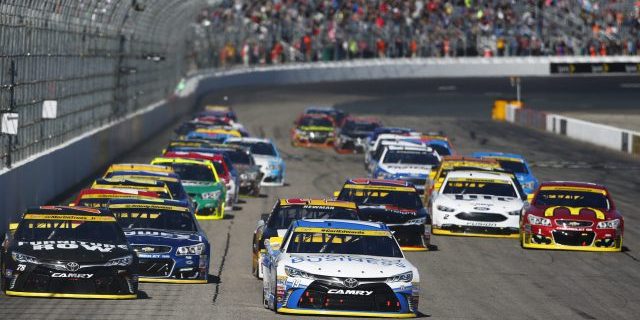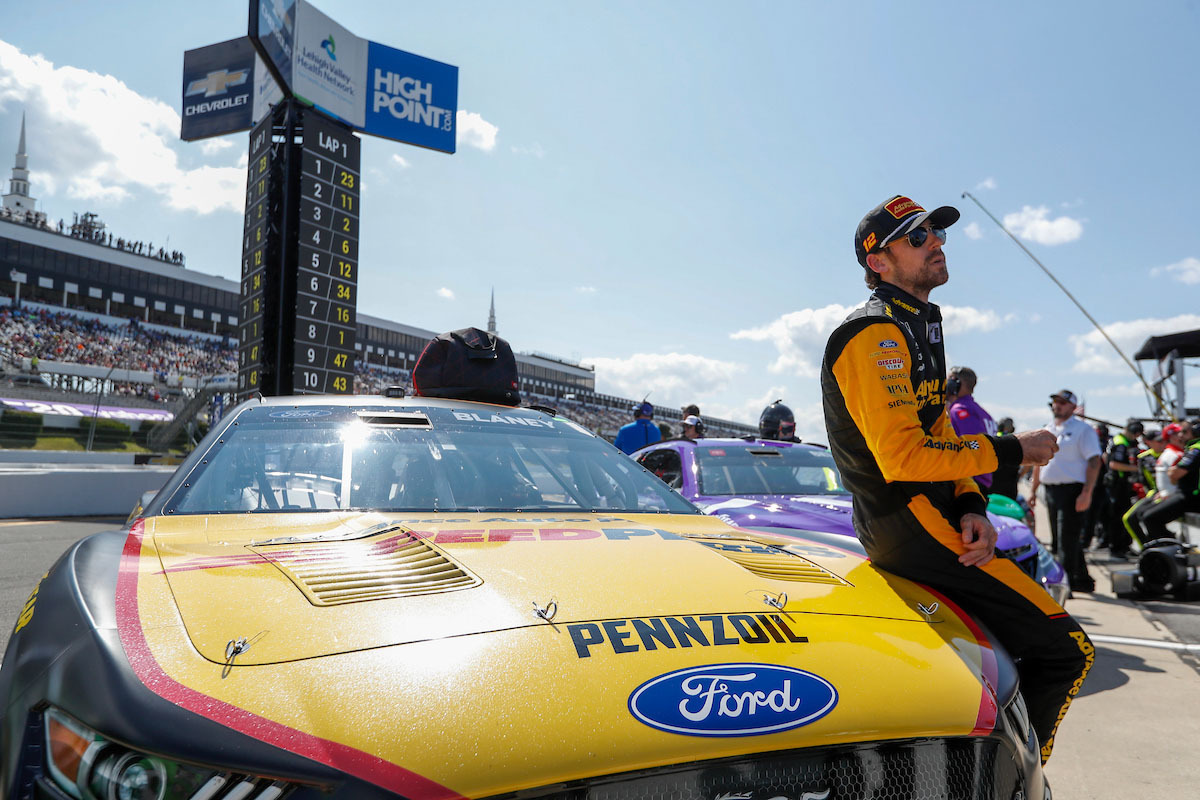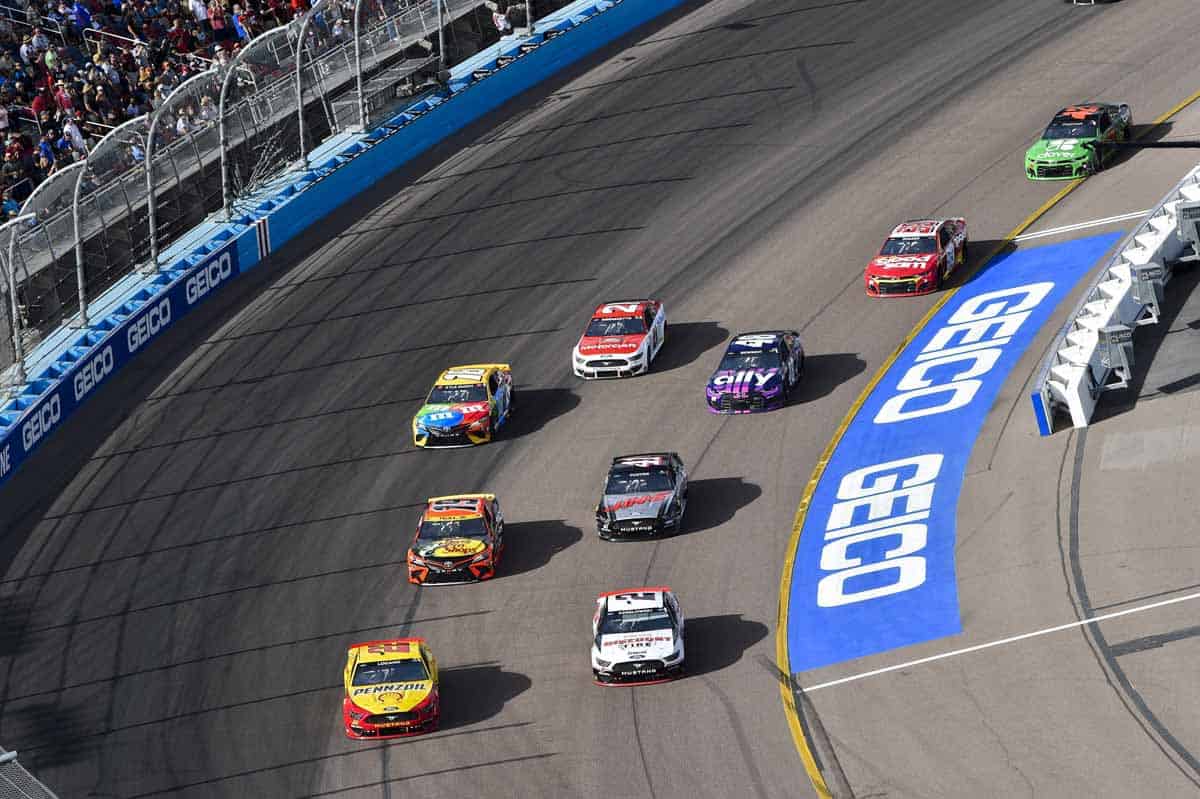What is the Black Flag with White Cross in NASCAR?


In NASCAR, the black flag with a white cross signifies a specific directive to a driver. When a driver sees this flag, it means they have not heeded a previous warning, typically the black flag, instructing them to pit within a designated number of laps. Usually, the black flag with a white cross is shown if the driver has not followed the pit instruction within five laps, leading to a more severe penalty. Displayed by the flagman, this flag communicates that the driver’s car is no longer being scored and they must address the issue that prompted the initial black flag signal.
Understanding this flag, along with the array of other colored flags, is crucial for both drivers and fans, as each flag influences the dynamics and strategies of the race. It is one element in a comprehensive system designed by NASCAR to regulate race conduct, ensure safety, and maintain fair competition among drivers. NASCAR officials use these flags to enforce rules, communicate important safety information and manage the race flow.
Key Takeaways
- The black flag with a white cross in NASCAR indicates a driver’s failure to pit after being signaled with the black flag.
- This flag means the driver’s position is no longer being recorded in the race standings.
- Flags play an essential role in NASCAR for rule enforcement, safety, and race management.
Table of Contents
Understanding the Black Flag with White Cross
In the competitive world of NASCAR racing, the black flag with a white cross holds specific significance, indicating strict penalties for drivers during a race.
Significant Rules in NASCAR
NASCAR enforces a variety of rules to maintain safety and fairness on the track. When a driver commits a violation, such as failing to maintain the minimum speed, disregarding pit road rules, or causing avoidable contact, they may initially see a black flag. This flag signals the driver to promptly proceed to the pit for consultation or repair. If the driver does not comply with the black flag instructions in a timely manner, officials escalate the warning by displaying the black flag with a white cross. From this point, the driver’s car number is no longer scored in the race until they adhere to the directive and leave the track for the pit.
Types of NASCAR Flags
NASCAR flags communicate essential messages to drivers and their teams:
- Green Flag: The race starts or resumes.
- Yellow Flag: Caution, drivers must slow down due to an hazard.
- Red Flag: The race is stopped due to serious conditions.
The Black Flag, covered in the previous subsection, signals a penalty, whereas the Black Flag with a White Cross signifies that a driver has been penalized and is not observing the penalty. If the situation persists, the offender may face disqualification from the race. Other flags include:
- White Flag: Signifying the leader has started the final lap.
- Checkered Flag: The race has concluded.
The black flag with a white cross is deeply integrated into NASCAR’s rule enforcement strategy, ensuring that races are conducted under strict safety and fairness regulations.
Race Procedures and Flag Meanings
Flags in NASCAR are essential for communication with drivers, indicating various stages of the race and specific conditions on the track. They signal everything from the start of the race to cautions and race completion.
Initiating the Race
The green flag marks the official start of the NASCAR race. When the green flag is waved, drivers are cleared to accelerate and begin the competition in earnest. Starting procedures are strict, and timing the launch perfectly can be an advantage for drivers.
Mid-Race Communications
During the race, the flagman communicates with drivers using a series of colored flags:
- Yellow flag: Signals a caution, requiring drivers to slow down due to hazards on the track, such as an accident or debris.
- Red flag: Indicates that the race has been stopped due to extreme conditions such as bad weather or major track obstructions.
- Blue flag with diagonal yellow stripe: Alerts a driver that faster cars are approaching and they should be prepared to allow them to pass.
- Black flag with a white cross: Informs a driver that they have been disqualified from scoring due to failing to respond to the black flag, which itself means they must report to pit road.
- Yellow and red striped flag: Warns of fluids or debris on the track, suggesting slippery conditions.
Concluding the Race
As the race nears its end, two flags signal its conclusion:
- White flag: Indicates the start of the final lap of the race.
- Checkered flag: Symbolizes the end of the race, waved at the winning driver as they cross the finish line.
NASCAR’s Penalty System
In NASCAR, penalties are enforced to ensure safety and fair play. These penalties can range from minor infractions to more severe violations that dramatically affect the race outcome.
Pit Road Infractions
Pit road is a critical area where multiple infractions may occur, often involving speed limits or pit crew behavior. When a driver violates pit road rules, they are typically penalized with a drive-through or stop-and-go penalty. For instance, speeding in the pits or having too many crew members over the wall can result in a driver being black-flagged, meaning they must enter the pit to serve their penalty. The black flag serves as a clear visual cue to the driver that they must address these issues immediately.
- Speeding in the pits: Drive-through penalty
- Too many crew members: Stop-and-go penalty
On-Track Violations
On-track violations are taken seriously due to the high speeds and inherent dangers of the sport. The black flag with a white cross signals that a driver has ignored repeated warnings and penalties, such as the black flag. This flag means the driver is no longer being scored and must report to the pit road to rectify the issue, which is typically related to damages or debris from their car, posing potential hazards.
- Ignoring the black flag: Black flag with a white cross (driver not scored)
- Car damage/debris causing danger: Mandatory pit stop for repairs
Track conditions are constantly monitored, and if a car is deemed dangerous, it can be removed from the race for the safety of all participants. Additionally, other flags like the red flag (stopping the race due to hazardous conditions) and the caution flag (warning of potential dangers on the track) play roles in NASCAR’s comprehensive penalty and safety system.
Effects of Flags on Race Dynamics
Flags play an essential role in NASCAR by communicating important information to drivers and teams, affecting the flow and the outcome of the race.
Impact on Drivers
When a NASCAR official waves the black flag with a white cross, it signifies that a driver has not heeded a previous instruction, typically to enter pit road for a consultation or penalty, and as a result, the driver’s scoring is ceased until they comply. This flag can greatly alter a driver’s race, as it not only indicates a penalty but also escalates the urgency for the driver to adhere to NASCAR’s direction, which is critical during the fast-paced and highly regulated environment of a race. Non-compliance can lead to disqualification and loss of points, having significant repercussions on the driver’s standings in the race and the overall championship.
Influence on Race Strategy
The presence of flags, like the black flag with a white cross, forces teams to adjust their strategies in real time. For example, during a race, quick decisions regarding pit stops, tire changes, and fuel management are crucial. If a driver is penalized and must visit pit road, strategies may have to be recalibrated, potentially involving riskier tactics to recover lost time. A caution period initiated by a red flag with a yellow stripe can also impact strategy, as it brings cars to a reduced speed behind the pace car, allowing teams to make strategic pit stops without losing as much position as during green flag conditions. Conversely, if a caution occurs close to the final lap, teams might opt to stay out to maintain track position, sacrificing fresh tires for a better restart position. Adhering to flag instructions during both a race and even a practice session can ultimately preserve a car’s integrity and a team’s competitive edge.
The Role of Race Officials and Safety Protocols
Race officials are tasked with the oversight of the competition, ensuring safety through clear communication and quick decision-making, particularly in the event of incidents or hazardous track conditions.
Observation and Decision-Making
Race officials are vigilant during the event, monitoring for any incidents or irregularities. They make decisions that could include pausing the race should a car accident occur or if debris creates unsafe track conditions. Officials use visual signals to inform drivers of necessary actions, such as returning to the pits for an assessment if they detect problems that are not easily noticeable.
Ensuring Track Safety
Safety protocols are in place to protect drivers, crew members, and spectators. Officials may issue a black flag with a white cross, which indicates that a driver has not heeded a previous warning or penalty. This flag is part of a system that includes red flags to stop a race immediately due to severe accidents or unsafe weather conditions, ensuring the well-being of everyone involved.
Communication Systems
Race officials employ a combination of flags and lights to convey messages to drivers. They use specific flag patterns to communicate vital information about the race and track conditions. Lights can enhance flag signals, providing instant visual cues that are critical in maintaining safety and order, especially when visibility is compromised or in fast-paced scenarios.
Bold and decisive actions by race officials during races maintain the integrity of the sport and ensure the safety of all participants.










